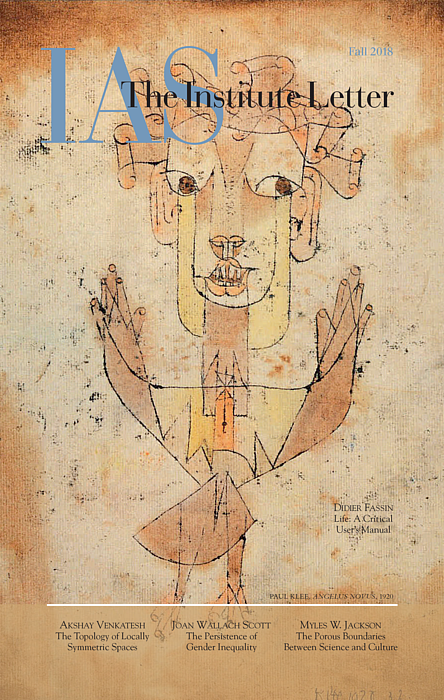Paul Klee’s Angelus Novus

Angelus Novus was painted by Paul Klee in 1920 using an oil transfer technique he had invented. It was purchased the following year by Walter Benjamin, who had it hung in the successive places where he lived and found in it an inspiration for several of his works, writing that having seen it could make the viewer “understand a humanity that proves itself by destruction.” In the ninth thesis of his posthumous essay “on the philosophy of history,” he describes it as the angel who, caught in a storm blowing from Paradise, contemplates the catastrophe of past events while being irresistibly propelled into the future. When he fled Germany in 1933, he brought it with him, but had to leave it in Paris with Georges Bataille, as he continued southwards to reach Spain. But just as he had crossed the border, in 1940, he was arrested and kept in custody in a hotel, where he was found dead the next day. At the end of the war, the artwork was passed with other possessions onto Theodor Adorno, who was at the time writing his Minima Moralia, before ending with Gershom Scholem, whose widow eventually gave it in 1987 to the Israel Museum, in Jerusalem. This “angel of history,” as Benjamin called it, has therefore an intimate and lengthy relationship with the Frankfurt School, in its most tragic period. —Coincidentally, the epigraph of the preamble of Georges Perec’s Life A User’s Manual is a quotation by Paul Klee, which reads: “The eye follows the paths that have been laid down for it in the work.”
From Life: A Critical User's Manual by Didier Fassin (Polity, 2018)
Angelus Novus was featured on the cover of the Institute Letter Fall 2018. Read Fassin's article for the Letter here, and find other articles from the issue here.

